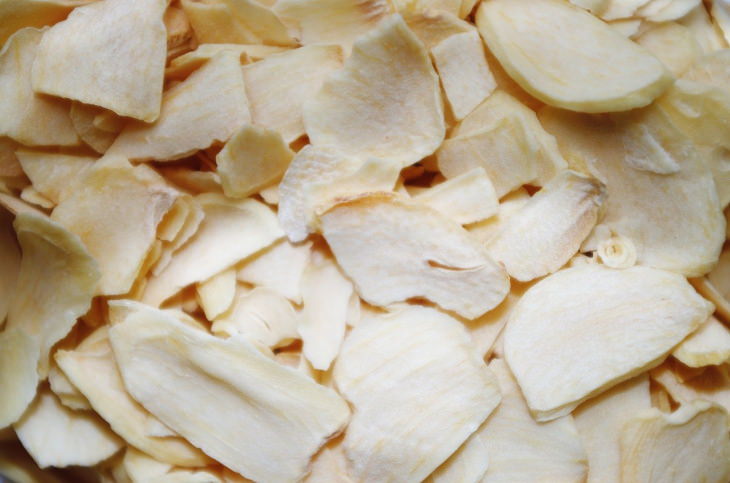
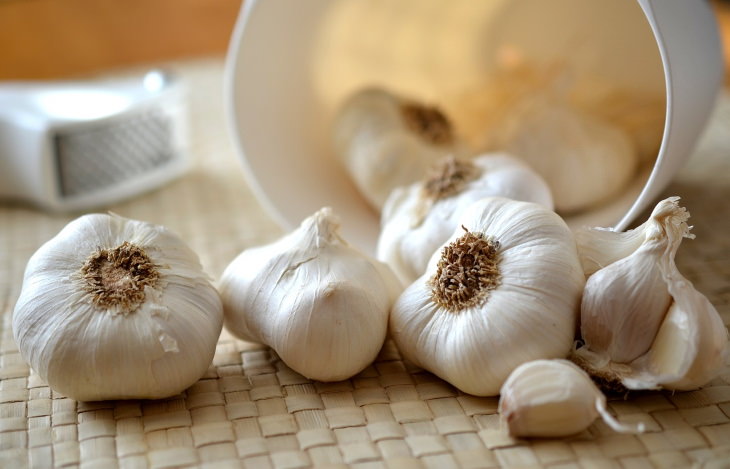
The shelf life of garlic ranges from just one day to up to 6 months. Why the huge difference, you ask? It all depends on whether or not the garlic has been separated, peeled, and chopped. Under prime storage conditions, an intact head of garlic will stay good for half a year, but an unpeeled garlic clove separated from the bulb will not last beyond 2-3 weeks. Peeled garlic has an even shorter lifespan - no more than a week. And lastly, chopped or minced garlic should ideally be used up right away, as it won’t last you even a day in the fridge.
Not sure if your garlic is still good to use? Fresh and flavorful garlic clove has a light cream color and a glossy exterior. It is also firm and plump-looking.
If the garlic clove is soft, matte, and closer to yellow than white, it’s well past its prime. Any discoloration, such as brown or gray spots, is a sign of decay. Such a garlic should be discarded immediately.
Sprouted garlic, on the other hand, is usually fine to use. All you need to do is cut the clove in half and remove the green sprouted core. Make sure to use up sprouted garlic as quickly as you can because sprouting reduces flavor.
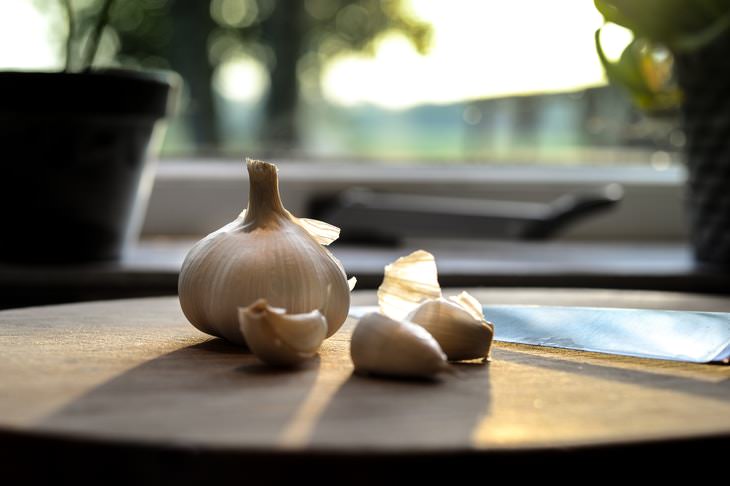
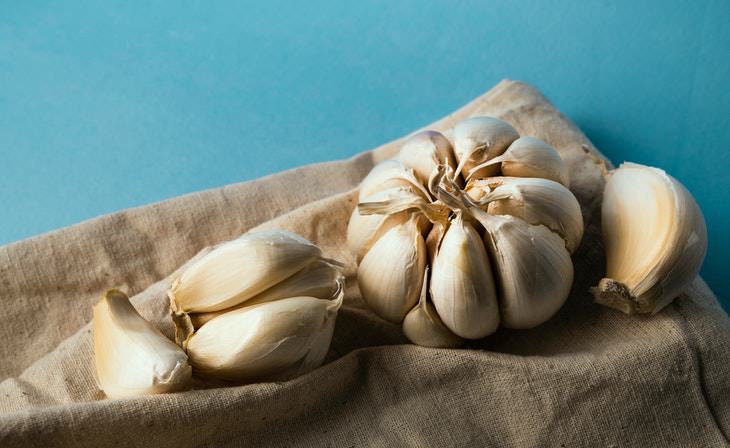
As you already suspect, keeping the whole head of garlic intact is the approach for long-term storage. But this isn’t always possible. Sometimes, you peeled or minced a few extra cloves than you ended up using in your cooking, and there are ways to preserve them too. For your convenience, the storage tips are divided into three sections - one for each kind of garlic.
This is the most sustainable and easy storage method. A whole head of garlic can be stored in any cool, dry place. Your pantry, kitchen cupboard, basement, or even a dark corner on the countertop are all great candidates. The ideal storage temperature for garlic is between 60° and 65°F (15-18°C), but it’s not a hard-and-fast rule, and most people just store garlic at room temperature. Avoid storing garlic in the fridge. This may sound counterintuitive, but cold temperatures can actually make garlic sprout or shrink faster.
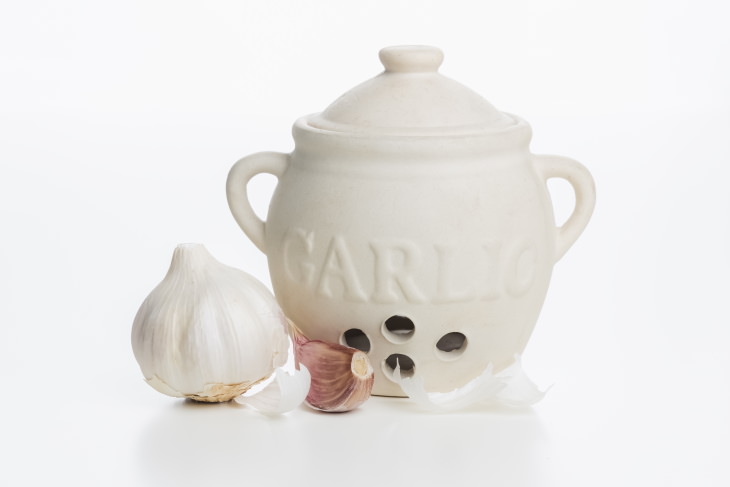
Peeled a few too many garlic cloves? No worries. You don’t need to throw away the excess, just read on. You actually have quite a few options.
If you cook often and will be able to use up the leftover garlic cloves within a week, just place them in a small container or a jar and store them in the refrigerator. Peeled garlic tends to lose its flavor quite rapidly, so make sure that you use it up as fast as you can.

In case you peeled way more garlic than you can use up in the near future, you can easily freeze it for several months. Note that, upon defrosting, the texture of the garlic will not be the same, but it will still preserve its flavor. You can use frozen garlic cloves in cooked dishes like soups, stews, and pasta with great success.
The best way to freeze peeled garlic cloves is to spread them on a plate or a baking sheet, give them an initial freeze, and only then transfer them to a container or freezer bag for long-term storage. This way, the cloves won’t stick together, and you’ll be able to use them up one by one.
The last but certainly not the least way to extend the shelf life of peeled garlic cloves is to pickle them. It mellows down their flavor, but this makes pickled garlic an excellent ready-made topping for salads, dips, and stir-fries. Certainly, the easiest way to make pickled garlic is to submerge whole garlic cloves in a jar filled with vinegar and salt and keep them in the back of the fridge for weeks or even months.
Related Article: How Garlic Does More Than Ward Off Vampires
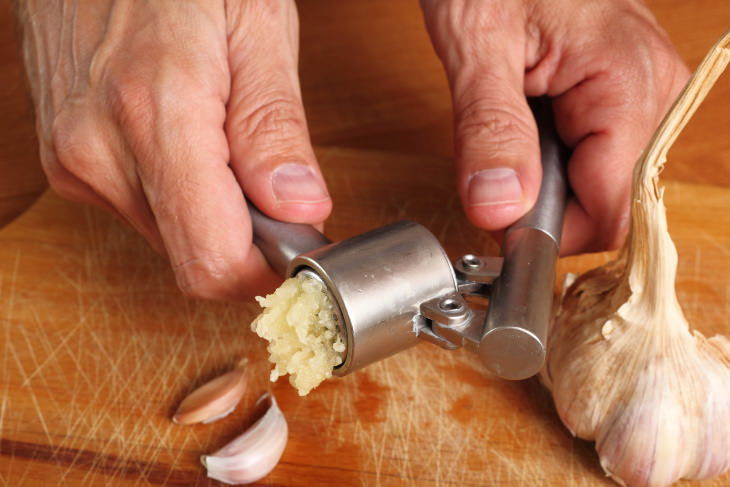
Even leftover minced or crushed garlic can be salvaged. You can refrigerate it in a container or jar for a day or less, but note that it will likely become a bit mushy, so it’s better to use it in cooked dishes to mask the texture.
Important! Avoid storing uncooked minced garlic in oil, even if refrigerated. The mixture creates a habitat for bacteria called Clostridium botulinum that causes botulism, a rare but potentially deadly illness that damages the nervous system. Store-bought minced garlic in oil has preservatives that prevent botulism, so they’re safe to use.
You can also freeze minced garlic. Just pack it into an ice cube tray, let it freeze solid, and then decant the garlic cubes into a container or bag for easy storage. Frozen minced garlic usually lasts for at least 2-3 months.
